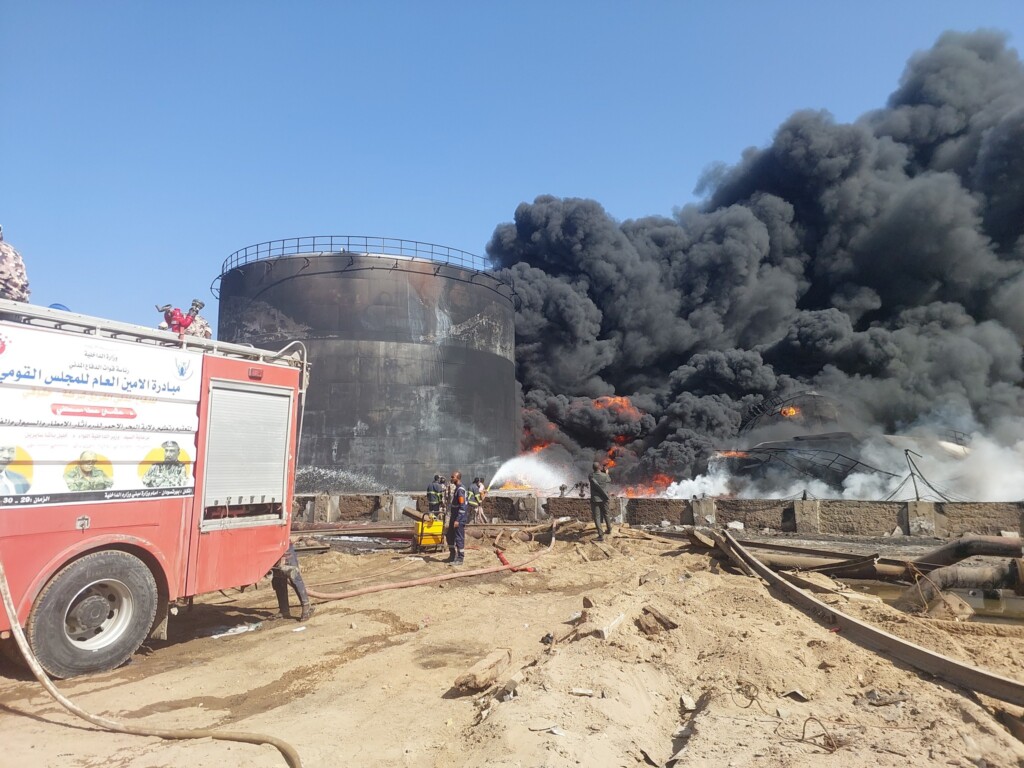Sudanese Pound falls sharply against USD, EGP, amid drone attacks, instability

Flames engulf a strategic fuel warehouse in Port Sudan following an alleged drone strike by the paramilitary Rapid Support Forces, May 6 2025 (Photo: Ministry of Energy via Facebook)
Instability, including drone attacks on Port Sudan, saw the Sudanese Pound fall sharply against international currencies in May. The drone attacks, which occurred daily, targeted military and civilian facilities, including the military base, Port Sudan airport and fuel depots.
Economic and financial analyst Ahmed Ben Omar told Radio Dabanga that the exchange rate increase during May amounted to EGP 61, equivalent to 32% of the total increase since the beginning of the year, reaching EGP 193.
He explained that the US Dollar exchange rate rose in the parallel market from 2,550 EGP to 2,743 EGP, an increase of 193 EGP, by (+7.57%). In the official market (according to the Bank of Khartoum), the dollar rose from EGP 2,001.91 to EGP 2,156.05, an increase of 154.14 EGP (+7.7% approx.)
He pointed to the convergence of the rate of increase between the official and parallel market, with the gap between the two prices continuing. He described the exchange rate rates in the first half of this year as stable compared to last year and the previous year. One dollar was worth about 580 Sudanese Pounds in mid-April of 2023, just before the outbreak of the war, rising in more than two years by 472%.
Fragility
Economic analyst Ahmed Ben Omar said that the Bank of Sudan’s policy of limiting liquidity and reducing cash circulation helped to some extent in absorbing (internal) speculation, but at the same time stressed that this did not prevent the rapid impact in the parallel market in the event of abnormal shocks directly related to military operations.
He explained that indicators show that the market remains fragile, reacting more strongly to military events than economic data, but at a less volatile pace.
Broad economic downturn
Sudan’s economy contracted by an additional 13.5 % in 2024, after shrinking by about a third the previous year, while extreme poverty is expected to cover 71 % of the population as the conflict continues, the World Bank said.
The bank said in a report on Tuesday that even if a solution to the conflict is reached in the coming months and important structural reforms are implemented, Sudan’s economy is unlikely to return to its pre-conflict GDP level before 2031.
The bank attributed the significant deterioration of the Sudanese economy to the noticeable collapse in the indicators of the main productive sectors, especially the agricultural sector, which witnessed a sharp decline in productivity due to the interruption of trade routes, the displacement of farmers, the destruction of agricultural infrastructure, and the lack of access to finance.
Poverty rates jumped to 71% from 33% in 2022, due to households losing their sources of income, and unemployment rates rising from 32% in 2022 to 47% in 2024, due to widespread business closures, economic uncertainty, and a sharp decline in stable job opportunities due to the severe impact of the conflict on the labour market.











 and then
and then